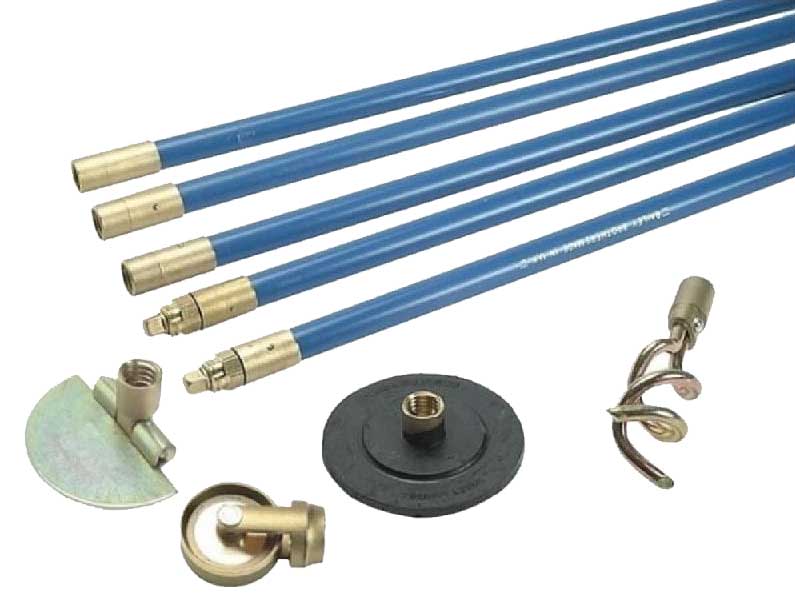Blocked drains are an absolute nightmare for your property. If you have a problem with your drains being blocked, you need to sort it out as soon as possible to ensure that the issue doesn’t cause any lasting damage. Here you can find out how to use a drain rod to clear that blocked drain quickly and easily.
Table of contents
What is a drain rod?
A drain rod is a tool commonly used for unblocking outdoor drains. They are popular amongst professionals and DIYers alike and come with many different attachments to use, depending on the type of congestion you’re dealing with. The most common is a plunger which can attach to the end.
Alternatively, if the blockage is stubborn, you can also opt for one or more of the following attachments to help you clear that obstruction:
- Corkscrew
- Harpoon
- Brush
- Hook
Rotating handles are also available if needed to make the process easier. Regardless of your desired attachment, this tool typically comes in the form of a drain rod kit, giving you all options for every blocked drain eventuality.

Can I use my own existing drain rods?
Generally, it’s a good idea to purchase new drain rods if you’re not sure when they were last used. Especially if you’re borrowing them from someone and you are unsure how much use they’ve had, or how old their tools are. This is because there is a risk that the ends of the drain rods can fall off the rod or the rod can snap during use. Not great if you’re already trying to remove debris from the blocked pipe in the first place. You’ll likely have to spend additional costs for the removal of that piece of rod too; we don’t want that!
How to rod a drain
Once you know where the blockage is, using a drain rod is simple and can be done in a few basic steps.
What you need:
- Drain rod sections
- Plunger
- Additional attachments (if required)
- Thick rubber gloves
- Protective glasses
- Protective overalls
- Face mask
- Bucket (to contain any debris pulled out from the drain for disposal)
1. Fit together the rods.
To use a drain rod, you’re first going to need to put the rod together. Take the separate pieces and attach them to each other. You should now have one long drainage rod. You can always remove or add sections as needed to suit the length of the pipe as you go.
2. Fit the plunger attachment to the end of the rod.
You should be able to easily twist the plunger on the attachment end of the rod. If you need different attachments for difficult blockages, simply remove and replace them as needed.
3. Remove the manhole cover, put on your protective gear and push the plunger into the blocked drain.
Here’s where you’ll need a bit of the old elbow grease. Drain rods are typically easy to manoeuvre thanks to their flexibility. So, you can effortlessly bend them around to find the opening of the pipe. Once you’ve done so, apply pressure to the plunger to help clear the blockage. If you’re using a corkscrew or similar, turn the rod clockwise to prevent the rods from coming apart.
Tip: Use the corkscrew or hook attachment first to remove the more stubborn parts of the blockage, if needed, then follow up with the plunger.
4. Clear up the area.
Once the blockage clears, you can use a hosepipe to wash away any leftover wastewater or debris following the unblocking and put back the manhole cover. You should be able to notice that there is a clear difference in your drainage by the water level.
It’s as easy as that! You’ll be able to clear the drain in no time.











